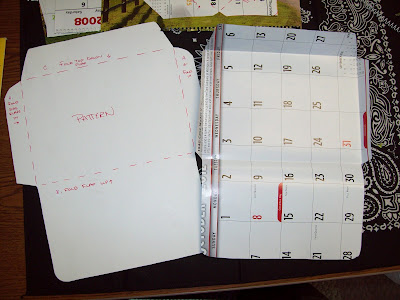Lady Willow has excellent step by step instructions-I absolutely love making these! Please take a moment to read through the steps she gives-& then I thought I would show you what I did using her tutorial.
I found some of these "Light up" pens which are suppose to light up when you write with them, however mine have dried up & no longer write and/or the light no longer works, so I decided to make a pen hook holder out of them. I also wanted a western themed hook, so I selected another pen for this purpose.
I gathered my supplies-I used a small plastic (or wooden) cutting board, a finely serated kitchen knife, metal nail file, plastic crochet hook, yarn scraps (for stuffing), small picture cut from a magazine, tacky glue & mod podge, and crochet thread (size 10 or smaller), for the 2 hooks I made here.
Hook #1: Light-up Pen
On the light-up pen, I used the groove just above the tip, & used the serated knife to carefully saw a little and then turned the pen while sawing all the way around until the tip popped off- I wondered how I would get the ink out, but after sawing the tip off, it just fell out! I used the nail file to soften the edges so it would be smooth to hold in your hand. (see hook holder #2 for photo)

The light-up pen casing was now a straight pipe, like a straw, so I had to figure out a way to keep the hook inside. I had a plastic size H hook to use. I decided to use part of an idea I saw in Crochet World magazine (Aug 2012) -Sparkle Pens (
http://www.ravelry.com/patterns/library/sparkle-pen), since the pen shaft was clear and would show anything I used to secure the hook inside. I found some cotton/metalic size 10 thread, and started making a cover to be slipped over the hook. For my H size hook, with a 1.5 mm hook, I chained 2, putting 4 sc in the 2nd ch from the hook, no joining, just keep sc in each st around and around. After getting a few rounds of sc, I inserted a metal hook which made it easier to crochet around, and would make sure that it would still stretch to fit over the plastic hook (I want a tight fit). I eyeballed the length of the shaft to know how many rounds to go (the thread streches a bit, so test it as you go), then sl st to finish off. I put the cover over the plastic H hook, and then pushed it into the pen shaft. It was a REALLY tight fit-I almost didn't get the hook into the pen-but I pushed and twisted and prodded until it did go in (maybe use a smaller weight thread next time), but this made it so my hook would not come out-no other filling nor glue needed, but I could have glued around the tip of the pen shaft next to the hook for extra security.
Tada! A new crochet hook with a fancy cover!
Hook #2: Western themed
I wanted a western looking hook holder next. I chose a pen from a stash of pens I pick up at conventions or meetings (This one happened to be from the Hereford assn) that have a logo on them, and I got creative to cover up this logo with a pretty picture from a magazine/catalog (I used my Mary Maxim catalog-puzzle pic or framed art of horses).

I used the yarn scraps, the glue, and the mod podge on this hook, in addition to the tools I used for the 1st hook.

My pen tips were plastic-make sure as metal would require stronger tools (like the
hacksaw).

I sawed off a little of the tip at a time-the farther back I cut off the bigger the hole for the hook to fit through, so I cut a little off then tried to fit my hook through.

If it didn't fit through, then I sawed another section of the tip off.

I then used the metal nail file to sand the edges where I just cut the tip off of, as they are a little sharp/rough.

I used the small parts inside the pen as much as I could to secure the hook inside-with this hook, I don't think I was able to use any of them. The hook was too long to use the plastic piece that keeps the clicker (top) of the pen stiff, so I stuffed the clicker part of the pen with yarn scraps and then glued the hook where it meets the tip of the pen to secure it. I might have used some rubber scraps to put around the hook-the covering on electrical wire works well too. I placed the magazine pic around the top part of the pen and cut it to the shape of the pen. Then I put a thin coat of mod podge on the pen, stuck the pic to it, and put on a thin coat of mod podge over the top. Let it dry and had another great new crochet hook.
I know I have a finished photo for Hook #2 somewhere, but cannot find it now, so I will add later. I hope you give this a try!








 If it didn't fit through, then I sawed another section of the tip off.
If it didn't fit through, then I sawed another section of the tip off.






























